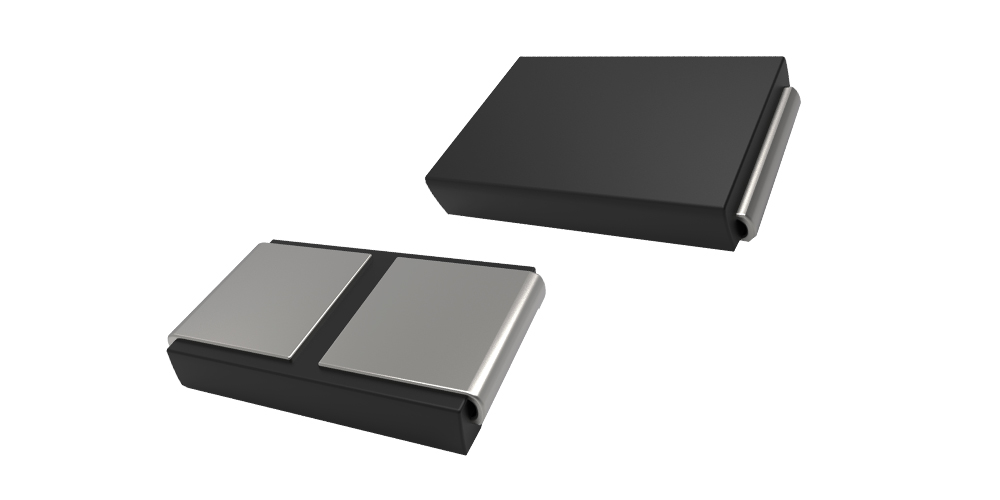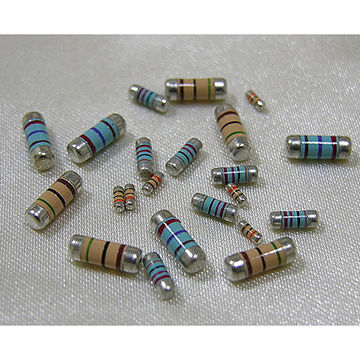Position:Home » Technical Articles
Resistors for Home Appliance
Writer:Microhm Page View:Date:2019-10-09
Home appliances use circuit control and safety devices as well as resistance loads to make our lives considerably easier. A simple understanding of the function and appearance of the electrical parts used in appliances, as well as the wire diagram symbols used to portray their use will give you a huge advantage in troubleshooting and repairing your home appliance problems.
Resistor:
A resistor restricts the flow of current through a circuit. Resistors from Microhm Electronics, like MELF resistor HPMRY, metal foil current sensing resistor NMS2818 and MPR 2512, are your best choice for home appliance.

Thermistor
A thermistor is a sensor that fluctuates its resistance value with temperature change; this resistance value can then be interpreted by a control system. Thermistors are often used by electronically controlled dryers such as the Whirlpool Duet dryer or Maytag Bravos dryer to measure the dryer's drum temperature, the control can then cycle the dryer's burner or heating element on or off to maintain a more accurate drum temperature.
Light Dependent Resistor (LDR)
An LDR is a sensor, which uses light to alter its resistance value, resistance decreases as the brightness of light falling on the LDR increases. Light dependent resistors are often used on a refrigerator's dispenser to automatically turn the refrigerator's night-light off and on as needed.
Thermostat:
A thermostat is a device for regulating the temperature of a system so that the system's temperature is maintained near a desired level. Almost all appliances use thermostats in some capacity. A refrigerator uses thermostats to regulate internal temperatures as well as regulate the need for and length of defrost cycles. Washing machines use thermostats to control water temperatures. Dryers use thermostats to regulate drum temperatures and to protect against fire hazards. Cooking appliances use thermostats to maintain an optimum cooking temperature.

Dryer motor compressor appliance motor
A motor is a transducer, which converts electrical energy to kinetic energy (motion). A motor may have multiple speeds, or directions of rotation. Most AC and DC motors commonly used in appliances, use a coil or several coils called the stator to create a rotating magnetic field causing the motors rotor to spin.
Resistor:
A resistor restricts the flow of current through a circuit. Resistors from Microhm Electronics, like MELF resistor HPMRY, metal foil current sensing resistor NMS2818 and MPR 2512, are your best choice for home appliance.

Thermistor
A thermistor is a sensor that fluctuates its resistance value with temperature change; this resistance value can then be interpreted by a control system. Thermistors are often used by electronically controlled dryers such as the Whirlpool Duet dryer or Maytag Bravos dryer to measure the dryer's drum temperature, the control can then cycle the dryer's burner or heating element on or off to maintain a more accurate drum temperature.
Light Dependent Resistor (LDR)
An LDR is a sensor, which uses light to alter its resistance value, resistance decreases as the brightness of light falling on the LDR increases. Light dependent resistors are often used on a refrigerator's dispenser to automatically turn the refrigerator's night-light off and on as needed.
Thermostat:
A thermostat is a device for regulating the temperature of a system so that the system's temperature is maintained near a desired level. Almost all appliances use thermostats in some capacity. A refrigerator uses thermostats to regulate internal temperatures as well as regulate the need for and length of defrost cycles. Washing machines use thermostats to control water temperatures. Dryers use thermostats to regulate drum temperatures and to protect against fire hazards. Cooking appliances use thermostats to maintain an optimum cooking temperature.

Dryer motor compressor appliance motor
A motor is a transducer, which converts electrical energy to kinetic energy (motion). A motor may have multiple speeds, or directions of rotation. Most AC and DC motors commonly used in appliances, use a coil or several coils called the stator to create a rotating magnetic field causing the motors rotor to spin.
Keywords:resistors
Latest News
- Resistor's role in measuring and correcting LED,,,
- Single through-hole resistors' characteristics ,,,
- Why shunt resistors for current sense applicati,,,
- Metal-film resistors with small size, high resi,,,
- 36W High-Current Shunt Resistors MMS8420,,,
- 1W Surface Mount Resistor MPR1206,,,
- An Overview of Microhm Electronics' Resistor Pr,,,
- More anti-sulfur resistors used in harsh envir,,,
- Resistance changes with temperature,,,
- 140W TO247 High Power Heatsinkable Resistor,,,
- MMS5930 is ideal for current sensing in industr,,,
- Shunt resistors selection for engineers' design,,,
- Considerations for choosing precision resistors,,,
- Ceramic Encased Cement Resistors NWH Series for,,,
- Resistors for Passive Balancing in Battery-Pow,,,
Hot Articles
- Microhm will take part in 10th Automotive World,,,
- Thanks for Visiting Microhm's Booth E5-5706 in ,,,
- Resistors in Short Supply: Blame Cars,,,
- New lunch: High Power Precision Shunt Resistor,,,,
- How to Test a Resistor,,,
- Innovative Technology, Future Electric: Electri,,,
- What is Precision Resistors?,,,
- SMD Resistors Sizes and Packages,,,
- The Construction and Features of Metal Film Res,,,
- What is a TO-220 Resisor?,,,
- Hot Selling Products: Precision Shunt Resistors,,,
- How to Calculate the Equivalent Resistance Valu,,,
- What is a Fixed Resistor?,,,
- Resistors in LED Circuits,,,
- Resistors Types and Materials Overview,,,
Resistance applications
- Why Zero-Ohm Resistors?,,,
- BMS for New Energy Vehicle,,,
- Carbon Film Resistors' Features and Application,,,
- The Main Application for High Precision and Low,,,
- Precision Resistors' Construction and TCR,,,
- Heater Blower Motor Resistor in Air Conditioner,,,
- Difference Between High Precision Resistors and,,,
- The Measurement Accuracy of Automotive Shunt is,,,
- Select the Right Resistor for Harmonic Filterin,,,
- The Four Important Functions of Alloy Resistors,,,
- Industrial Roberts Applied to Solar Photovoltai,,,
- Surface Mount Resistor's Size and Package ,,,
- Miniature future for passive electronic compone,,,
- Urbanization Development Bringing the Transform,,,
- Shunt Resistor MMS8420 for High Current Stable ,,,
